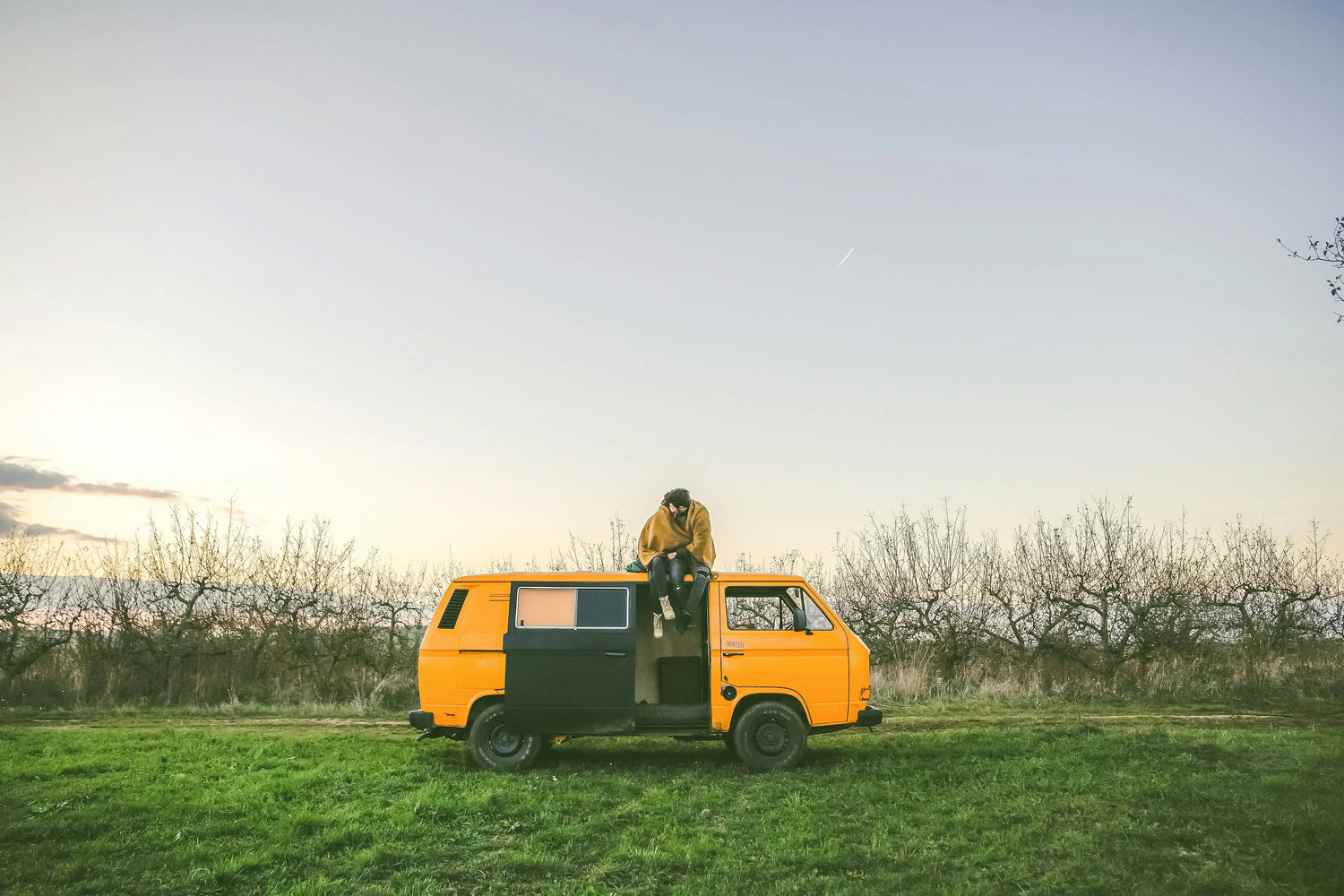Road trips bring a different experience, and going on one of them allows me to break free and explore. Only one thing that makes such a peaceful experience a total mess is none other than the packing part. The trunk bulges, clothes get mixed up, snacks are squeezed, and gear is scattered. I finally found a simple solution: using compression bags for luggage. In this guide, I’ll walk you through how I organize snacks, clothes and gear using compression travel bags, share tools and tips I use, and show how it all made my last trip smoother.
Why Organizing For A Road Trip Is Different
Don't compare packing for a road trip to flying or staying in one hotel. You are traveling in a vehicle that may stop at several places. The weather may change and you’ll use the car trunk more than an overhead locker. You’ll always want easy access to items from snacks and jackets to pillows and chargers on the go.
What if you throw everything into bags without a system? You end up digging through the mess every stop. I shared my experience of the last trip. I carelessly put my heavy winter jacket at the very bottom of the suitcase. The snacks were crushed under shoes and dirty clothes were scattered everywhere. That mess made me realize that I badly needed compression bags for suitcases.
These plastic bags help you in squeezing bulky items and keeping clean clothes apart from dirty ones. They help you make better use of the trunk or luggage space.
What Are Compression Bags And How They Work
So what do I mean by “compression bags”? These are bags or pouches designed for travel or storage that remove excess air from clothes or soft gear and make them compact to take up less space.
Here is how compression bags for packing typically work:
- You fold or roll your clothes or soft items.
- You place them inside a sealable bag marked for compression.
- You seal the bag properly using the seal track.
- You remove air either by rolling compression bags (for non-vacuum style) or using a pump/valve (for vacuum storage bags style).
- The content shrinks and you pack the bag into your suitcase or trunk.
You end up with less bulk and better space efficiency when packing with these bags.
Look out for a good seal, durable material and a size that fits your luggage/trunk when picking such a bag for storage. If it leaks air or tears easily, you lose the benefit.
Packing Strategy For Your Road Trip: Snacks, Clothes & Gear
Here’s how I break down my packing of snacks, clothes and gear using the compression-bags strategy.
Snacks
Snacks tend to be rigid, maybe messy, and often need quick access. Because of this, I do not always compress snacks into vacuum bags. Instead, I use:
- A small accessible tote in the front or side of the car for snacks, water bottles, and wrappers.
- A medium bag in the trunk for bulk snack packages of chips and large packs that I can reach easily.
- If I have soft snack items or picnic blankets that accompany snacks, then I might pack those in a compression travel bag.
Snacks = easy reach, minimal compression, keep them separate from clothes and soft gear.
Clothes
Compression packing bags work most perfectly with clothes. Compressing works well for jackets, sweaters, and blankets like bulky items that I needed to carry for changing weather. My approach:
- Separate clothes into categories: driving-day wear, evening/outing wear, layers for cold, and a bag for dirty clothes.
- I use compression bags for suitcases for bulky items to shrink them and free space.
- I might fold or roll t-shirts and shorts like lighter items and put them in the bags, but they may not compress as much.
- I pack the compressed bags first into the suitcase or trunk base, then lighter items on top.
- I keep one bag labelled “dirty” or use a different color so clean and worn items remain separate. That makes the return trip easier.
Gear
By gear, I mean travel pillows, blankets, chargers, first-aid kits, camera gear, games, etc. My system:
- Soft items like pillows or extra blankets I compress using the same technique so they don’t hog space.
- Hard items (camera, cooler, chargers) I keep in side compartments of the trunk or accessible bins so I don’t need to unpack to reach them.
- I make sure the compressed bags don’t bury the charger or map like gear I’ll need mid-trip.
- On arrival or after a stop, I check if I need to recompress or reorganize if things shifted during the drive.
Putting it all Together
Here is the order I follow when packing:
- Place the compressed clothes or soft gear bags at the bottom or center of the trunk/suitcase.
- Place the lighter items and frequently used items on top.
- Snacks and accessible gear go in the side pockets or the front of the car.
- Label or color code the bags that help me know where clean clothes are, where dirty clothes go, and where gear is.
- At each stop, I do a quick check: did any bag shift? Do I need to remove items or reslot the compressed bags?
This strategy saved me so many moments of “where is my warm sweater” or “ugh, the pillows filled all the space” on my last road trip.
The VacBird Turbo X7 Works As Savior, And How I Use It
One tool that really elevated my packing game was the VacBird Turbo X7. I decided to invest in it after reading about vacuum style compression travel bags and realizing I could reuse them again and again.
Here’s the reason I chose it and how I use it on a road trip:
- It has a rechargeable vacuum pump built for travel. This means I can use it anytime, as long as it's fully charged.
- The set includes bags in multiple sizes to help me pack jackets, blankets or pillows in the large bag, and smaller items in the medium bag.
- Because it is a vacuum style, it removes more air than simple roll bags, which means it saves more space.
- On my last trip, I used it like this: I selected all winter layers and extra blankets the night before. I rolled them loosely, placed them into the Turbo X7 bag, sealed it, and used the pump until the bag shrank. Then I placed that bag into the trunk space under other items.
- Mid-trip, I put used clothes in one bag, reused the same compression bag. It kept my clean vs dirty separate, and I had clear space when I stopped for breaks.
If you adopt the system of snacks accessible, clothes compressed, gear sorted, and add a high-quality compression system like this, you’ll feel a big step up in how efficient your packing is.
Tips From My Side & Mistakes To Avoid
Here are practical tips I learned the hard way, and some mistakes you’ll want to skip:
Tips:
- Don’t overfill compression bags. If you push too much in you risk tearing or a poor seal.
- Roll or fold clothes neatly before putting them in the bag. That trick helps in better compression results and more space saving.
- Keep a separate bag for dirty clothes. This helps you to keep your clean clothes clean and you don’t scramble to repack at stops.
- Use color coding or labels so you know which bag has what.
- At each stop, check your trunk/travel bag arrangement. Compressed bags may shift while driving, so it helps to reslot them.
- Space is not the only factor because weight matters too. Even compressed clothes still add weight, so avoid packing excess just because you “can”.
Avoid These Mistakes:
By learning these, I found my road trips less chaotic and more enjoyable.
FAQs
Q1: What are the best compression bags for travel?
Durable and reusable bags available in various sizes with good sealing quality are the best compression vacuum storage bags. The best decision is to pick one that comes with a pump that removes more air and often saves more space.
Q2: Do compression bags for travel with pump work better than manual ones?
Yes. The compression bags with a vacuum pump allow you to remove air completely and quickly. On a road trip where space matters more than ever, that extra bit of compression makes a difference.
Q3: Can I use compression bags for storage as well as travel?
Definitely. They work well for off season clothes, blankets and pillows. Just be sure the items are fully dry and the storage environment is safe. Just keep avoiding damp or sharp objects.
Q4: Are clothes compression bags for travel safe for all types of garments?
They are ideal for bulky sweats, jackets and blankets. You might skip compression or use gentle packing for delicate fabrics, structured garments, leather or items with rigid shapes because heavy compression may damage them.
Q5: Are compression bags for travel with vacuum worth it?
Absolutely. You enjoy the benefits if your travel involves limited space, bulky items, multiple stops or shifting conditions. The space you save and the organization you gain makes the difference between a messy trunk and a smooth ride.
Conclusion
Packing for a road trip is stressful, and that made your mood bad during travel. You turn the chaos into order by organizing snacks, clothes and gear in a thoughtful way and using tools like compression bags for luggage.
If you want to try one thing first, pick a set of compression packing bags, practice packing once before your trip and test the layout in your trunk or suitcase. See how much space it frees up. It helps you next time packing with confidence.






Leave a comment
This site is protected by hCaptcha and the hCaptcha Privacy Policy and Terms of Service apply.